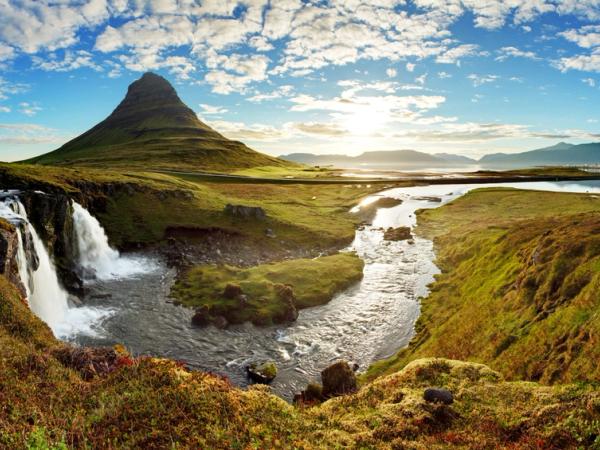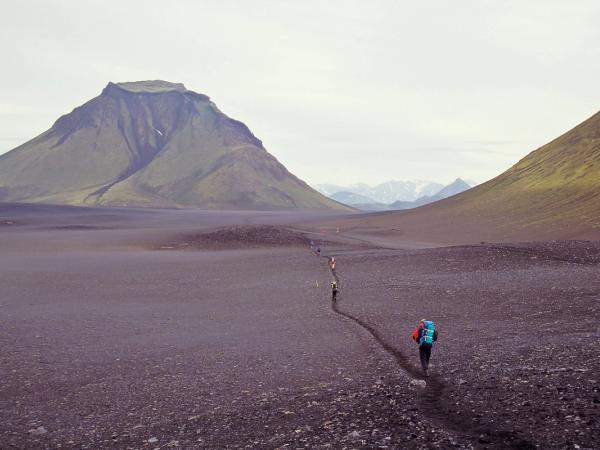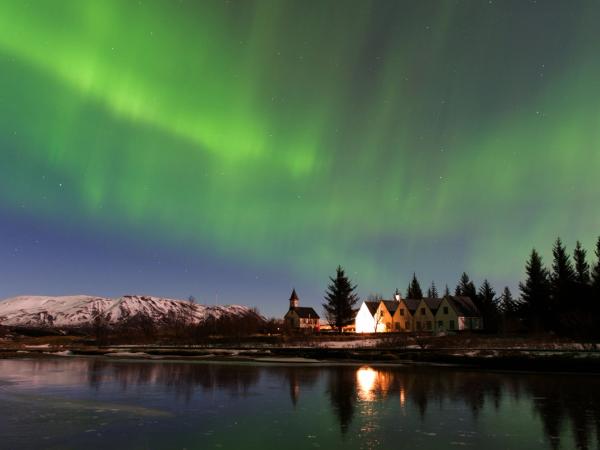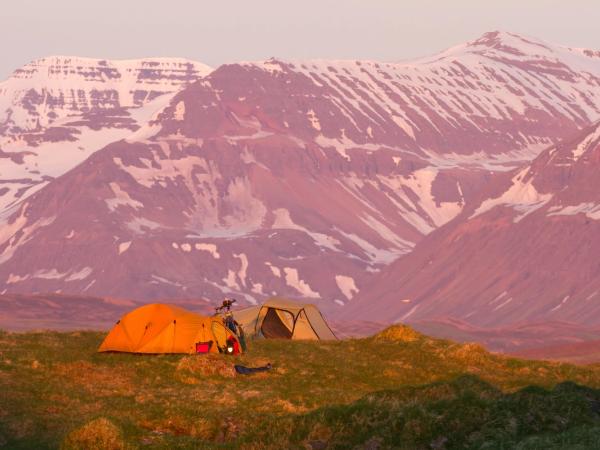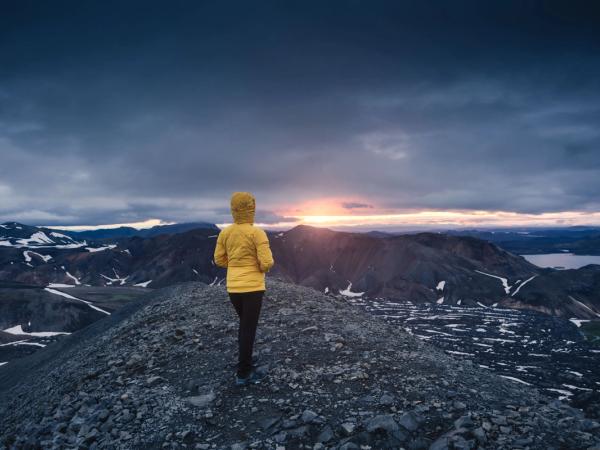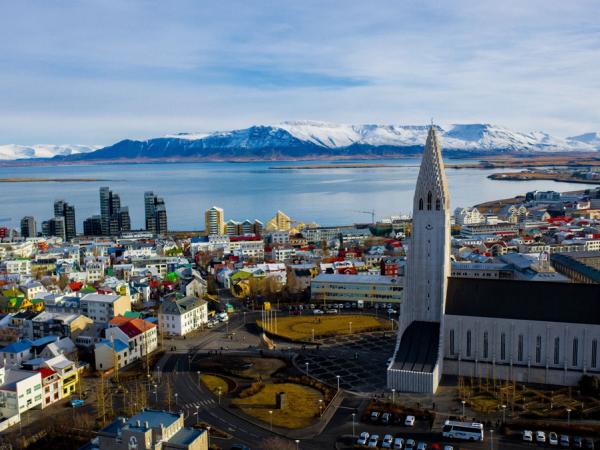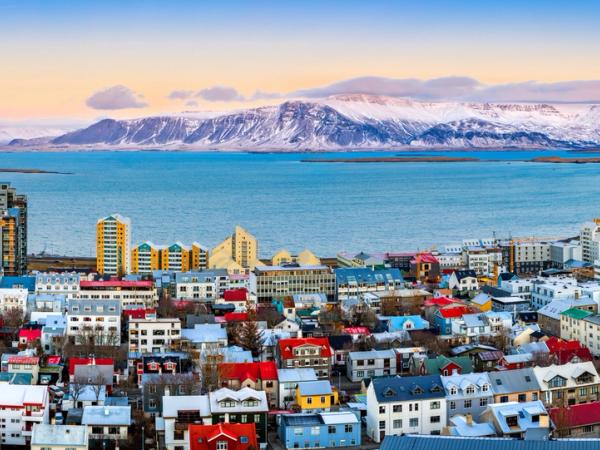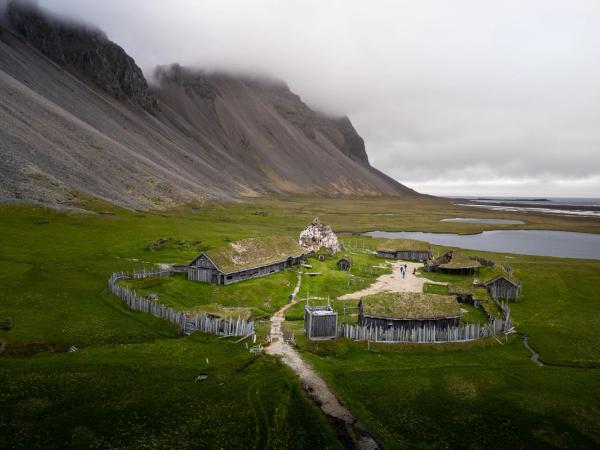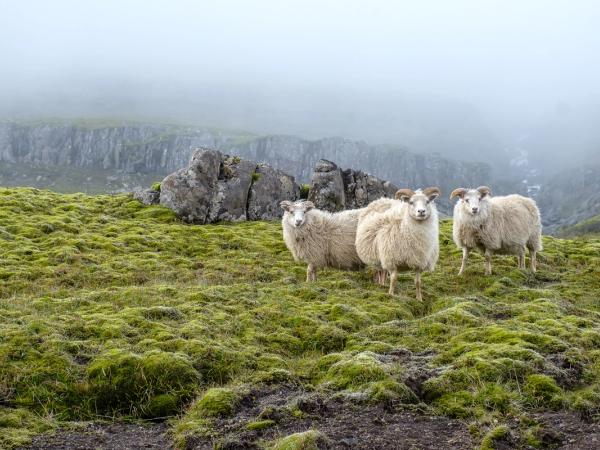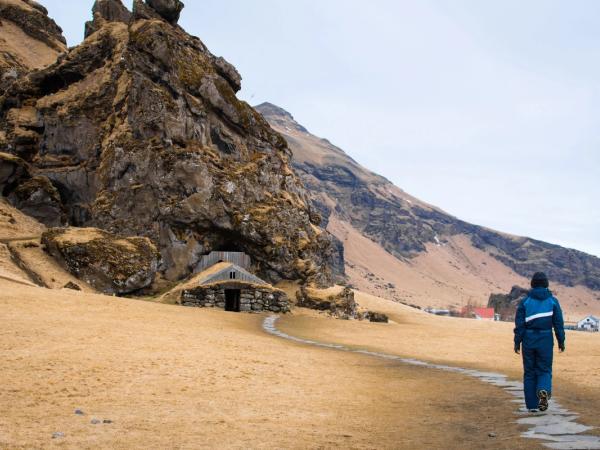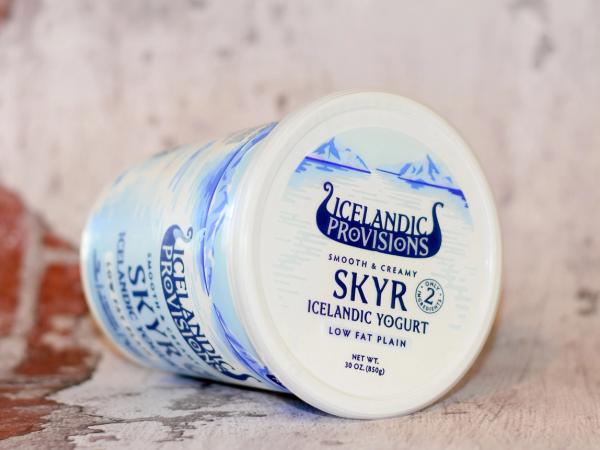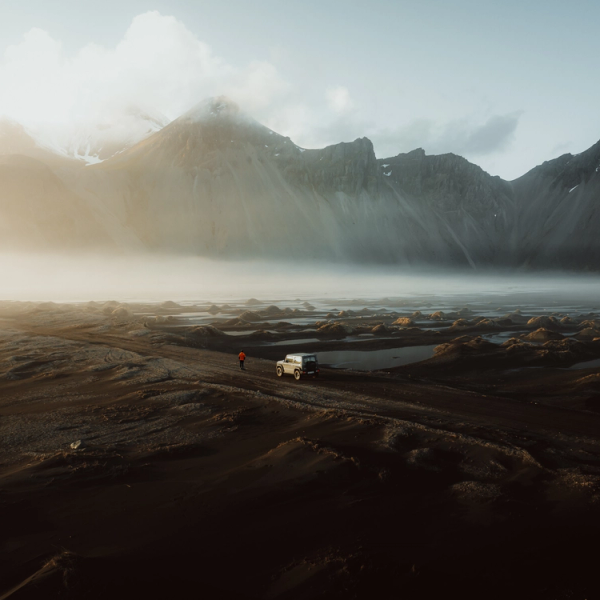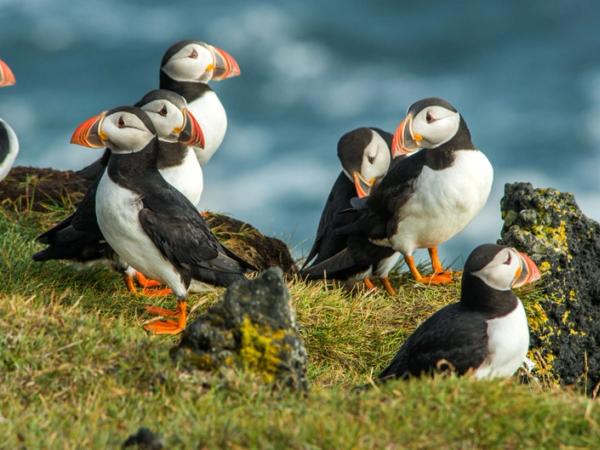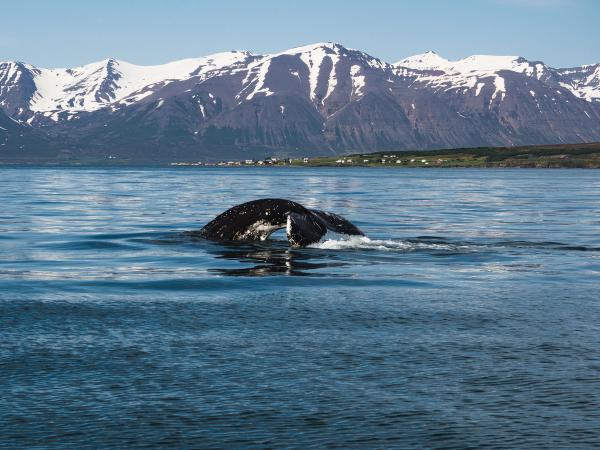
What is Iceland Known For? 20 Things That Make Iceland Famous
Iceland, known as the Land of Fire & Ice, is full of amazing contrasts. You’ve got fiery volcanoes and icy glaciers all shaping the landscape of this beautiful island. Add in the country’s rich culture and quirky traditions, and it’s no wonder travelers love it here. Let’s dive into 20 things that make Iceland such a special place.
Key Takeaways
- Iceland’s landscapes feature volcanoes, glaciers, waterfalls, geysers, and black sand beaches, creating a truly magical atmosphere.
- Iceland is ideal for witnessing the Northern Lights in winter and experiencing nearly 24-hour daylight during summer’s Midnight Sun.
- Iceland’s Viking heritage is alive with sagas, turf houses, quirky traditions like elf beliefs, and a unique family-based naming system.
- Iceland uses geothermal and hydropower for most of its energy, making sustainability a natural part of everyday life.
1. Breathtaking Nature & Natural Wonders
Iceland’s landscapes are truly something else. You’ve got volcanoes, glaciers, waterfalls, geysers, and hot springs all in one place. The country’s volcanic activity has shaped a land that feels almost otherworldly. There are over 130 volcanic mountains, with Eyjafjallajökull (remember that 2010 eruption?) and Katla—sitting under the Mýrdalsjökull glacier—being some of the more famous ones. Glaciers cover around 11% of the country, and Vatnajökull is the biggest one in Europe, feeding impressive waterfalls like Gullfoss and Skógafoss.
Thanks to all that geothermal energy bubbling under the surface, Iceland has some amazing geysers like Strokkur, which erupts every few minutes. And don’t forget the hot springs—the Blue Lagoon is the most famous, known for its soothing milky-blue waters full of skin-friendly minerals. If you’re into dramatic coastlines, the black sand beaches like Reynisfjara, with their striking basalt sea stacks, will leave you speechless.
2. Northern Lights (Aurora Borealis)
Iceland is one of the best places on Earth to catch the Northern Lights. Between late September and early April, when the skies are dark and clear, you’ve got the perfect conditions to see this magical show of dancing lights. These vibrant colors—like green, pink, and purple—appear when solar particles hit the Earth’s atmosphere, and they light up the sky in the most stunning way.
Great spots for watching include Þingvellir National Park and the Snaefellsnes Peninsula. Since both have little light pollution and wide-open views, they’re ideal for Northern Lights hunting. Lots of visitors take guided tours, which can boost your chances of seeing the lights. Sometimes, they combine the trip with cool activities like glacier hikes or soaking in a hot spring under a sky full of stars.
3. Midnight Sun
In the summer, Iceland experiences nearly 24 hours of daylight, known as the Midnight Sun. From mid-May to late July, the sun never really sets because Iceland is so far north, just below the Arctic Circle. This endless daylight creates a surreal vibe and offers endless opportunities for exploring and outdoor fun.
The Midnight Sun lets you do things like go hiking or even play a round of golf at midnight! It’s also an amazing time to catch wildlife being more active than usual. Photographers love the soft, golden light that hangs in the air, perfect for snapping photos of Iceland’s gorgeous landscapes. Festivals like the Secret Solstice celebrate this unique time with music and all-night events.
4. Reykjavík
Reykjavík, Iceland’s capital, is a small but lively city packed with culture, nightlife, and history. As the world’s northernmost capital, it’s the hub of Iceland’s economy and culture. The streets are colorful and vibrant, offering everything from cozy cafes to quirky museums and some of the best restaurants in the country.
One of the city's standout landmarks is Hallgrímskirkja Church, an architectural gem inspired by Iceland’s lava formations. You can even go up the tower for a stunning view over Reykjavík and the surrounding mountains. The Harpa Concert Hall, with its striking glass design, is another must-see, hosting everything from concerts to art exhibits. The city is also big on art, with galleries, museums, and even street murals showing off Iceland’s creative energy.
5. Viking Heritage & Turf Houses
Iceland’s Viking roots run deep. The country’s history is told through sagas, ancient stories about early settlers that give a glimpse into life back then. Traditional turf houses, with their thick walls and grass-covered roofs, are a big part of this heritage, built to keep homes warm in Iceland’s tough weather. You can still visit some, like at the Glaumbær Farm & Museum.
Every summer, festivals like the Viking Festival in Hafnarfjörður bring this history to life with reenactments, crafts, and storytelling. It’s a great way to experience how the Vikings lived and learn about their influence on modern Icelandic culture.
6. Icelandic Wool & Lopapeysa Sweaters
Icelandic wool sweaters, called Lopapeysa, are famous for a reason—they’re super warm and beautifully crafted. Made from the wool of Icelandic sheep, these sweaters have a distinctive circular pattern on the yoke, inspired by nature and tradition.
Knitting is a beloved tradition in Iceland, with patterns often passed down through generations. You can pick up one of these cozy sweaters in local shops or even join a workshop to learn about the craft. It’s a great way to take a piece of Iceland’s culture home with you, and you’ll definitely stay warm!
7. Music Scene
Iceland’s music scene is way bigger than you might expect for a small country. Björk and Sigur Rós are probably the most famous names to come out of Iceland. Björk has sold over 40 million records worldwide, and her influence stretches across music, fashion, and even film. She’s known for her bold, one-of-a-kind style, and her live performances are unforgettable. Sigur Rós, with their dreamy, atmospheric sound, have built a huge global fanbase, selling out concerts all over the world.
But it doesn’t stop there. You’ve also got bands like Of Monsters and Men, who blew up with their debut album My Head is an Animal—remember "Little Talks"? That song went multi-platinum, and the band found themselves topping charts internationally. Then there’s KALEO, another Icelandic band making waves. Their hit "Way Down We Go" has been featured in tons of TV shows and movies, and they’ve been rocking stages across the globe.
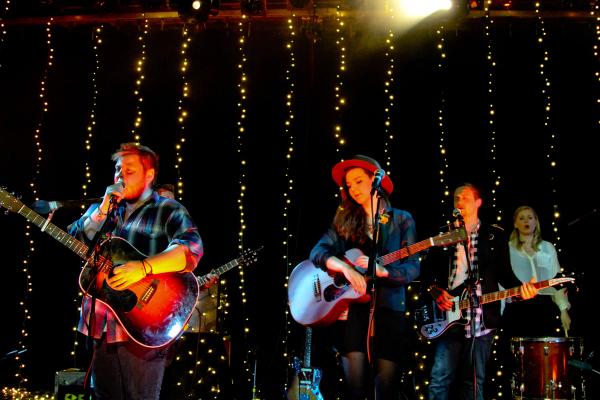
8. Safety
Iceland is one of the safest countries in the world. It consistently ranks at the top of the Global Peace Index, and you’ll notice that sense of trust and community everywhere. We often leave our doors unlocked, and it’s common to see kids playing freely in neighborhoods.
This feeling of safety extends to travelers, too. Whether you’re wandering the streets of Reykjavík at night or exploring remote hiking trails, you can feel comfortable and secure. It’s one of the many reasons people fall in love with Iceland and its welcoming atmosphere.
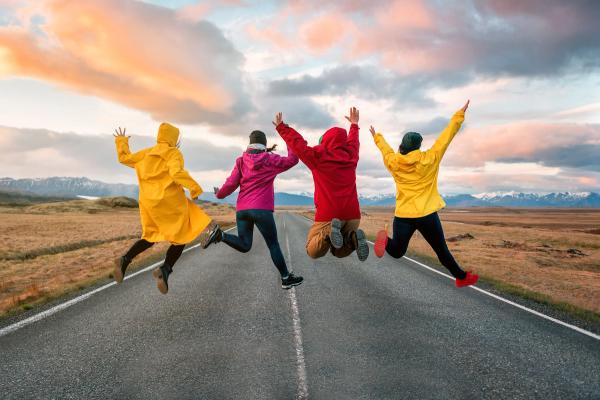
9. No Standing Military
Unlike most countries, Iceland doesn’t have a standing military. Instead, it relies on NATO for defense. The country does have a Coast Guard and a Crisis Response Unit that focus on things like search and rescue, maritime surveillance, and peacekeeping missions abroad.
By not having a military, Iceland can focus its resources on other areas like education, healthcare, and environmental efforts. This peaceful approach is a big part of what makes Iceland such a progressive and forward-thinking country.

10. Strongmen
Iceland is home to some of the world’s strongest people—literally! Strongmen like Hafþór Júlíus Björnsson (aka "The Mountain" from Game of Thrones) and Jón Páll Sigmarsson have put Iceland on the map in strength competitions. Björnsson won the World's Strongest Man title in 2018, while Sigmarsson was a four-time winner back in the 1980s.
Strength is a big part of Icelandic culture, with roots going all the way back to Viking times. In fact, feats of strength were used to measure a man’s worth. Even today, strength competitions draw huge crowds, and many young Icelanders look up to these local heroes as role models.

11. Elf Beliefs
Believe it or not, many Icelanders hold a deep respect for the possibility that elves, or Huldufólk (hidden people), exist. Folklore is full of stories about elves influencing human life, and sometimes, even modern-day construction projects are altered to avoid disturbing areas believed to be inhabited by them.
If you’re curious about these mystical beings, you can take a class at the Elf School in Reykjavík or join a tour of sites tied to elf legends. It’s a fascinating part of Iceland’s culture that reflects a deep respect for nature and the unseen.
12. Zero Mosquitoes
Here’s something pretty unique about Iceland—you won’t find any mosquitoes here! Even though the country has plenty of fresh water, the chilly temperatures and unpredictable weather make it impossible for mosquitoes to survive.
This little fact makes outdoor activities during the summer even more enjoyable. You can hike, camp, and explore without having to worry about getting bitten. Scientists are still studying why mosquitoes can’t thrive here, but for travelers, it’s just one more reason to love Iceland.

13. Unique Naming System
Iceland has a different approach to names than most places. Instead of traditional family surnames, Icelanders use a patronymic or matronymic system. This means a person’s last name is based on their parent’s first name, followed by -son (son) or -dóttir (daughter). So if Jón has a son named Ólafur, the son’s last name becomes Jónsson, meaning “Jón’s son.”
The Icelandic Naming Committee makes sure new names fit with the country’s language and traditions. It’s a system that puts more emphasis on individuality and family heritage rather than focusing on status or lineage.
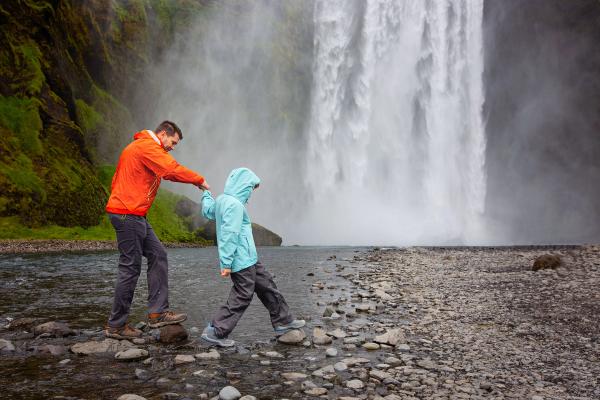
14. Lack of Forests
If you’re wondering why Iceland seems to have very few trees, it’s because much of the country’s original forests were cleared by early settlers. Back then, wood was used for building and heating, and sheep grazing made it hard for forests to grow back.
Today, only about 2% of Iceland is forested, but reforestation efforts are underway. Organizations like the Icelandic Forest Service are working to bring back some of the greenery and combat soil erosion. This lack of trees gives Iceland its wide, open landscapes, which are part of what makes it so unique.

15. High Renewable Energy Use & Geothermal Heating
Iceland is a world leader in renewable energy, with about 85% of its primary energy coming from clean sources like geothermal and hydropower. Most homes and public buildings are heated using geothermal energy, making the country incredibly sustainable.
Geothermal power plants, like Hellisheiði, use the heat from deep underground to generate electricity and provide hot water. Iceland’s expertise in this area is recognized globally, with other countries looking to learn from its renewable energy success.

16. No McDonald’s
Since 2009, Iceland has been McDonald’s-free. The fast-food chain left the country due to high import costs following the financial crisis. Instead of global chains, Iceland focuses on supporting local restaurants and promoting its own traditional cuisine.
This choice reflects Iceland’s commitment to sustainability and supporting local businesses. You won’t find a Big Mac here, but you can try something more authentic, like lamb-based burgers or seafood dishes that highlight the country’s fresh ingredients.

17. Icelandic Cuisine
Iceland’s food scene is full of surprises. You’ve got traditional dishes like fermented shark (Hákarl) and Icelandic hot dogs (pylsur), as well as local delicacies like Skyr. Fermented shark has been around since Viking times—it’s an acquired taste, but it’s a big part of the country’s culinary heritage.
Skyr, a thick, creamy dairy product similar to yogurt, has been a staple for centuries and is loved for its mild flavor and high protein content. And you can’t visit Iceland without trying their famous hot dogs, made from a mix of lamb, beef, and pork, served with a blend of onions, ketchup, mustard, and remoulade. It’s comfort food, Icelandic style.
The country’s seafood is also top-notch, with fresh Arctic char, cod, and langoustines on offer. Icelandic chefs have found creative ways to blend traditional ingredients with modern techniques, making the food scene vibrant and exciting.
18. Exploring by Car, Campervan, and Motorhome
One of the best ways to explore Iceland is by hitting the road. Whether it’s by car, campervan, or motorhome, you can travel the famous Ring Road, a 1,332-kilometer (828 miles) route that circles the island and takes you through some of the country’s most jaw-dropping landscapes and natural wonders.
Driving lets you discover hidden gems like secluded waterfalls, hot springs, and charming fishing villages at your own pace. If you’re feeling adventurous, the F-roads will take you deep into Iceland’s rugged highlands, but you’ll need a 4x4 for those. Camping along the way or watching the Northern Lights from a remote spot makes the journey even more special.
19. Wildlife
Iceland’s wildlife is as unique as its landscapes. The Icelandic Horse is probably the most famous animal, known for its small but strong build and smooth tölt gait. Viking settlers brought over these horses, and they have remained a cherished symbol of the country’s heritage.
Birdwatchers will love spotting puffins, especially in places like Látrabjarg and Dyrhólaey, where they nest along the cliffs. The Arctic Fox is another iconic creature, changing its fur color with the seasons to blend in with the environment. In the east, you might even spot a reindeer, which were introduced in the 18th century and roam the highlands and coastal areas.
Iceland’s waters are teeming with marine life, making it a prime spot for whale watching. You can see humpbacks, orcas, blue whales, and more, with tours leaving from places like Húsavík, known as the whale-watching capital of Iceland.
20. Iceland’s Water
Iceland is home to some of the cleanest, freshest water in the world. The tap water, or Kranavatn, comes straight from natural springs and glaciers, filtering through layers of lava rock over centuries. It’s so pure that you can drink it straight from the tap and, in some places, even directly from rivers and streams. The water is not only safe but incredibly refreshing—most visitors are amazed by how good it tastes!
The Ölfus Spring is one of the world’s largest natural springs, providing water that’s naturally rich in minerals. This pristine water source has been untouched for thousands of years, giving Iceland its reputation for having some of the cleanest water on Earth. If you’re traveling through Iceland, don’t bother buying bottled water—just bring a reusable bottle and enjoy free, delicious water wherever you go.

Conclusion
Even if you're not planning a trip to Iceland, learning about it is like discovering a whole new world. The country’s wild landscapes, Viking history, and unique traditions are full of surprises. Whether it’s diving into Icelandic culture, getting lost in its natural wonders, or just finding out more about its music and folklore, there’s plenty to enjoy from a distance. Iceland’s the kind of place that sparks your imagination, no matter where you are.

